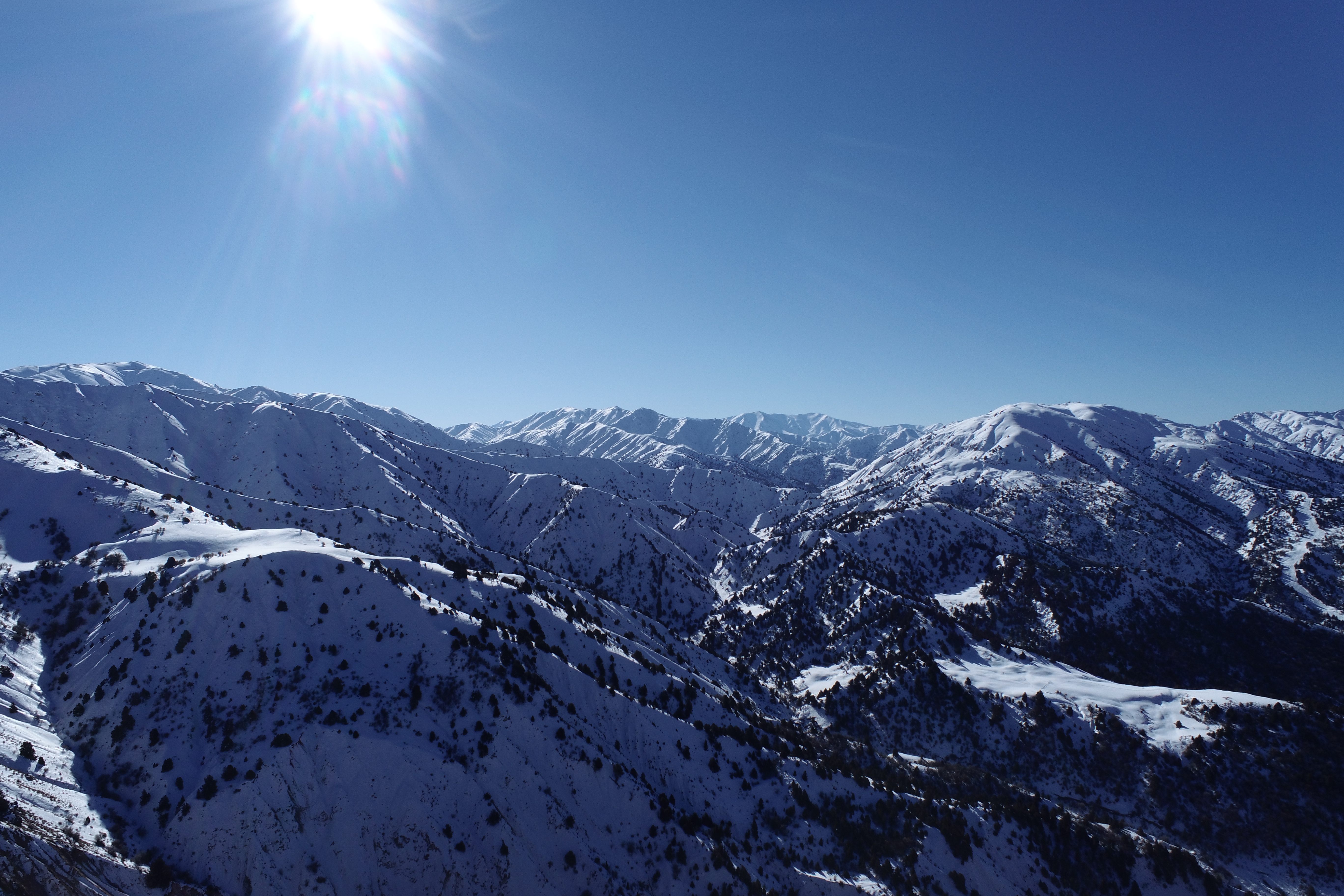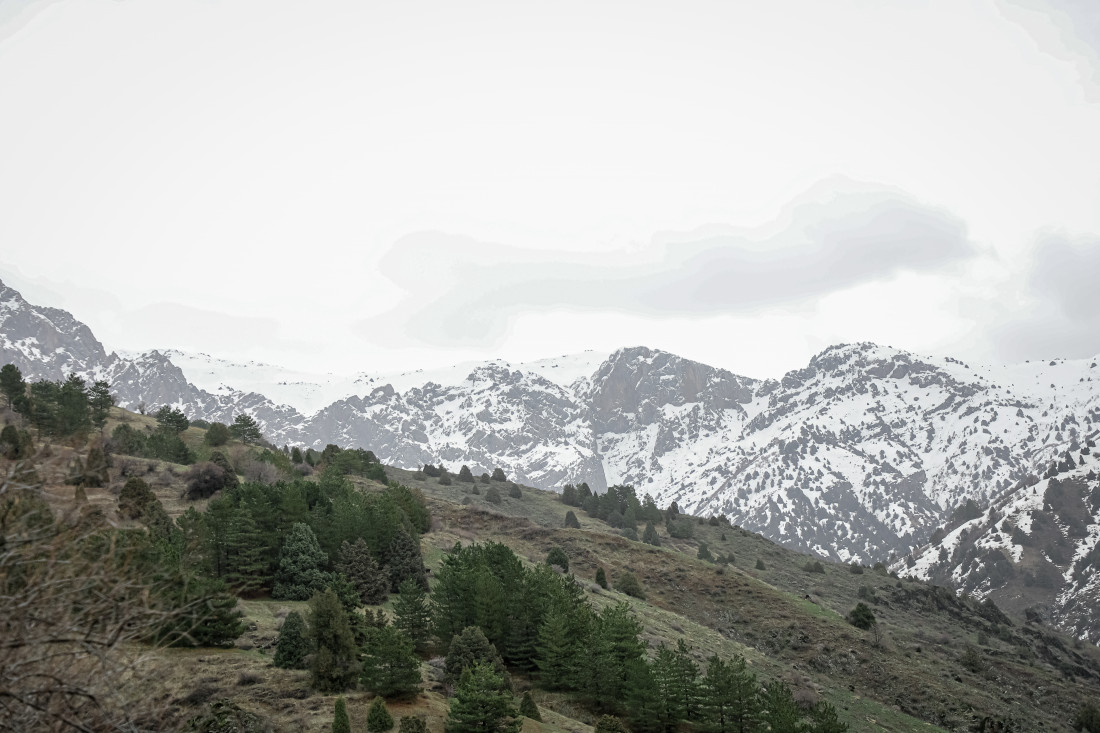Did you know that on the territory of Uzbekistan there is a unique national park included in the UNESCO World Heritage List. This park is a real miracle of our planet, admires with its purest untouched nature, amazing natural attractions and historical monuments. Ugam-Chatkal National Park was established in 1990 on the territory of the Tashkent region, which includes Bostanlyk, Parkent and Akhangaran regions. The area of the park is 574,000 hectares.  In 2016, UNESCO announced that the park was listed as a World Heritage Site, including the magnificent Chatkal Mountains. The landscape of the park mainly consists of the mountain ranges of the Western Tien Shan. The majestic mountains form numerous gorges and canyons, and between them flow the mountain rivers Pskem, Chatkal, Ugam and Koksu. Peak Adelunga - the highest peak, belongs to the Pskem Range, is located in the north-eastern part and has a height of 4301 m above sea level. On the opposite side there is another high peak Beshtor with a height of 4299 m above sea level. Together they form two great mountains that only the most experienced climbers can climb.
In 2016, UNESCO announced that the park was listed as a World Heritage Site, including the magnificent Chatkal Mountains. The landscape of the park mainly consists of the mountain ranges of the Western Tien Shan. The majestic mountains form numerous gorges and canyons, and between them flow the mountain rivers Pskem, Chatkal, Ugam and Koksu. Peak Adelunga - the highest peak, belongs to the Pskem Range, is located in the north-eastern part and has a height of 4301 m above sea level. On the opposite side there is another high peak Beshtor with a height of 4299 m above sea level. Together they form two great mountains that only the most experienced climbers can climb.

On the territory of the national park there is a protected area, which is a specially protected natural object. Due to the unique natural landscape, the park is rich in flora and fauna, beautiful waterfalls and lakes, rocky areas and hiking trails passing through picturesque valleys. Research work is carried out in the park and strict monitoring of the state of flora and fauna is carried out. Every year, employees of the Chatkal Biosphere Reserve conduct scientific expeditions and conferences, as well as supervise forestry and the maintenance of natural resources. Special inspectors control the number of plants and animals, including endangered species listed in the Red Book, and also monitor the cleanliness of the environment.
The park contains a complex of biospheric natural ecosystems and a gene pool, as well as specially protected areas. Among the inhabitants of the park: snow leopard, Menzbir's marmot, Tien Shan brown bear, black stork and many other rare animals. In the floodplains of mountain rivers and along the slopes of the gorges, one can see dense woody vegetation and juniper forests. In the foothill areas there are wild thickets and planted orchards. Hawthorn, maple, almond, cherry plum are often mixed with artisanal vegetation - with barberry, wild rose, honeysuckle, etc. Also in the foothills there are wild apple trees and birch groves, for example, in the Aksakata tract in the Western Tien Shan Mountains.
In addition, there are archaeological sites in the park. For example, in the Karasau tract you can see ancient rock paintings. The sites of primitive people were also discovered: Paltau, Obirakhmat, Khodjikent, Kulbulak, Pulutkhan. Ancient tools, utensils, ritual burials were found at the sites. Such monuments indicate that even forty thousand years ago people already lived in these most picturesque places, using fertile pastures and spring water.

Every year the park is visited by a huge number of tourists and tourists from all over the world. The foothill areas of Chimgan, Beldersay, Khodjikent and Parkent are very popular at any time of the year. You don't need a special permit to visit these places. In summer, these places fascinate with their green cover, juniper thickets, and in winter with snow-capped peaks, plunging into the atmosphere of a winter fairy tale. Numerous resorts, hotels, sanatoriums, children's camps, as well as various recreation areas are located in the most beautiful parts of the park, namely along the perimeter of the Charvak reservoir, in the foothills of the Small and Big Chimgan, in the Beldersay tract. The resorts of the Bostanlyk region, the ski resorts "Chimgan", "Amirsoy", "Beldersay", the sanatoriums and medical resorts "Khumsan", "Tibet", "Chartak" and many other tourist sites are ready to accept everyone, regardless of age, to restore and maintain health in the open spaces of the healing nature of the Ugam-Chatkal National Park.
Working hours: 9:00 AM - 6:00 PM, Mon-Fri
For any questions
ПОЛЬЗОВАТЕЛЬСКОЕ СОГЛАШЕНИЕ
1. Определение
Настоящее Пользовательское соглашение (далее — Соглашение) является Публичной офертой в соответствии со статьёй 367 Гражданского кодекса Республики Узбекистан от 21.12.1995 (https://lex.uz/ru/docs/111181#162763) и регулирует порядок использования материалов и Сервисов сайта Государственного унитарного предприятия «Национальный PR-центр» (далее — Предприятие), размещённого на веб-сайте и поддоменах Национального Туристического Информационного Центра: https://uzbekistan.travel/ (далее — Сайт).
Посетитель и (или) Пользователь подтверждает, что ознакомлен, полностью и безоговорочно принимает все условия настоящего Соглашения и обязуется их соблюдать.
Использование Сайта Пользователем означает полное принятие данного Соглашения «как есть» в форме акцепта.
Соглашение вступает в силу с момента посещения любой страницы Сайта и (или) регистрации на Сайте и действует бессрочно во время пользования Сервисами Сайта.
Настоящее Соглашение обязательно для исполнения всеми Посетителями и Пользователями без каких-либо изъятий и дополнительных согласований.
Пользователь обязуется самостоятельно проверять актуальную редакцию Соглашения на Сайте перед использованием Сервисов.
2. Предмет Соглашения
Предметом настоящего Соглашения являются правила использования материалов Сайта и предоставление Посетителю и (или) Пользователю возможности использования Сервисов Сайта.
Предприятие является правообладателем исключительных прав на Сайт в целом и на его составные части, включая все виды контента: логотипы, товарные знаки, тексты, статьи, аннотации, иллюстрации, фотографии, графику, аудио- и видеофайлы, пользовательские интерфейсы, дизайн, структуру, программы, базы данных.
Я прочитал(а) и соглашаюсь с условиями использования сайта и политикой конфиденциальности.
